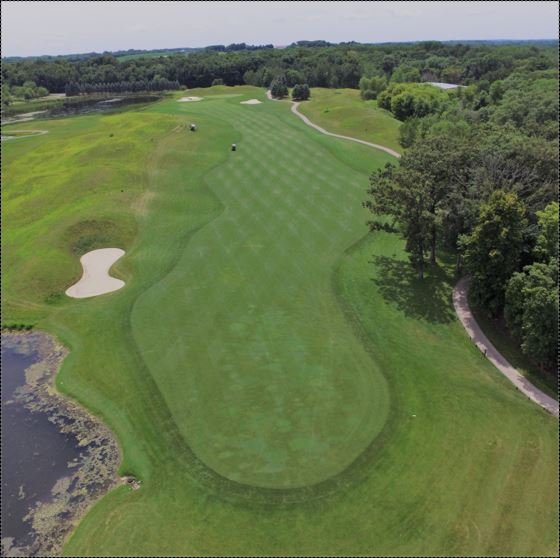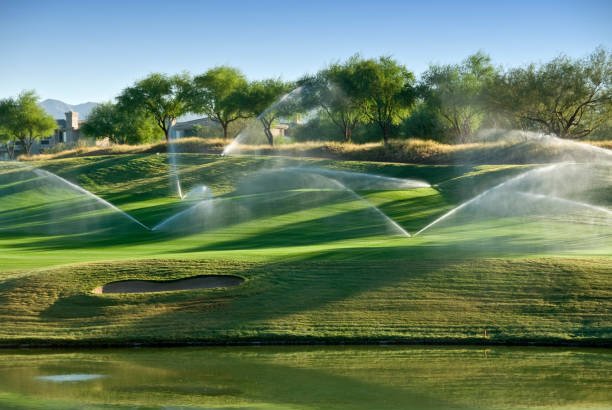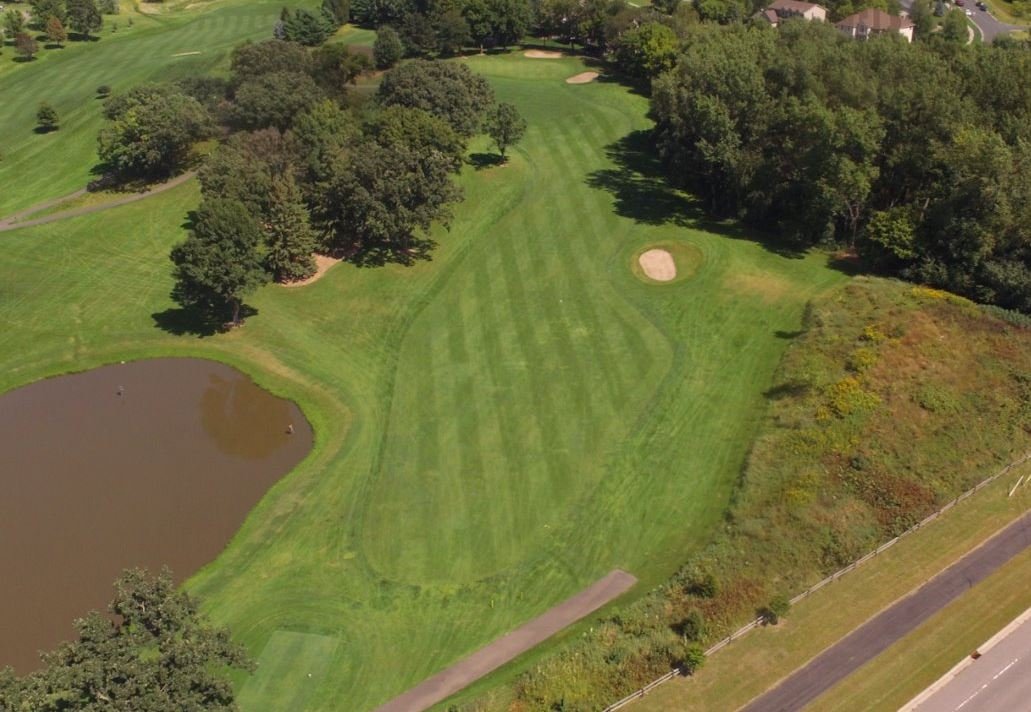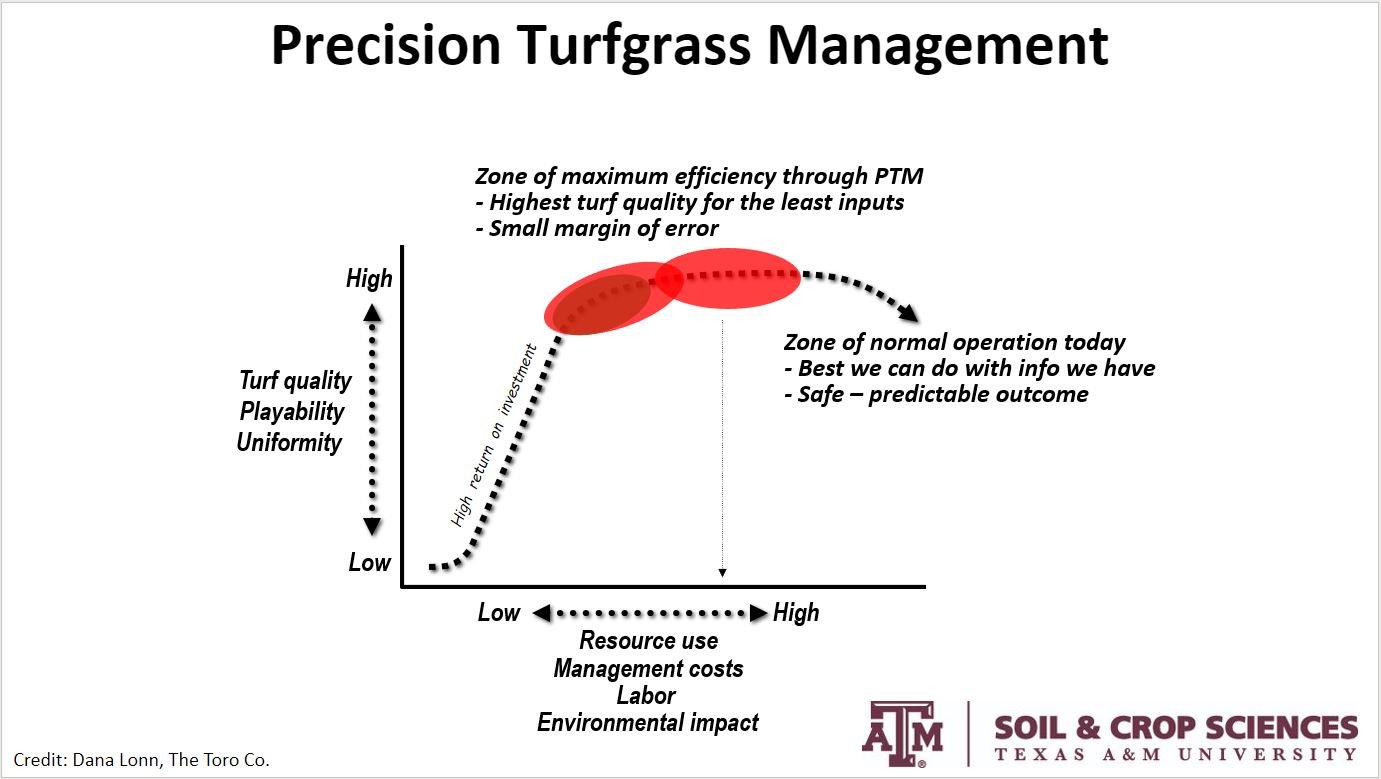Advancing golf course fairway irrigation management
$225,000 in investment from FFAR and industry match
105 golf course superintendent survey respondents
250,000 - 1,250,000 gallons: typical range for water used/acre on golf fairways in the U.S. Source: USGA, 2015
The golf course industry faces increasing pressure to reduce management inputs, particularly irrigation.
Recently completed research supported by IIC funding explored using precision irrigation on golf course fairways, supported by soil mapping and deploying soil moisture sensors. The team, made up of researchers based in Minnesota and Texas, and led by TX A&M Associate Professor Chase Straw, compared golf course fairway water consumption using precision irrigation management and traditional or conventional irrigation scheduling methods. Preliminary results show excellent potential for water savings, with targeted, precision irrigation methods using 46% less water compared to evapotranspiration (ET) based irrigation scheduling and 24% less water than conventional irrigation scheduling methods.
“Advancing technology is only part of the solution. As researchers, we need to understand [water managers’] challenges related to adoption including technological, economic, and administrative challenges.”
— Chase Straw, Texas A&M University
In 2022, as a separate research objective, this team also fielded a nationwide survey of golf course superintendents to study the forces that are currently driving or limiting adoption of precision irrigation technologies and methods.
Survey results:
The top three driving forces leading golf course superintendents to adopt precision irrigation technologies were: reducing water use (87% of respondents); increasing playability (68% of respondents); and increasing turfgrass aesthetics (68% of respondents). The most common barriers to adoption of precision irrigation technologies were: high initial costs (77% of respondents); need for higher administrative approval (36% of respondents); and lack of information on the effectiveness of precision irrigation technology (28% of respondents).
According to survey results, the most adopted precision irrigation technologies were: individual head irrigation control systems (68% of respondents); use of handheld soil moisture sensors without GPS (58% of respondents); use of evapotranspiration weather stations (41% of respondents).
Additional details will be shared once survey data analysis is completed. The team plans to use the baseline understanding established through this survey data to inform ongoing and future work aimed at encouraging broader adoption of precision irrigation tools and management methods. Having this baseline will enable the team to reflect back in 5 to 10 years to assess the impacts of their work.






